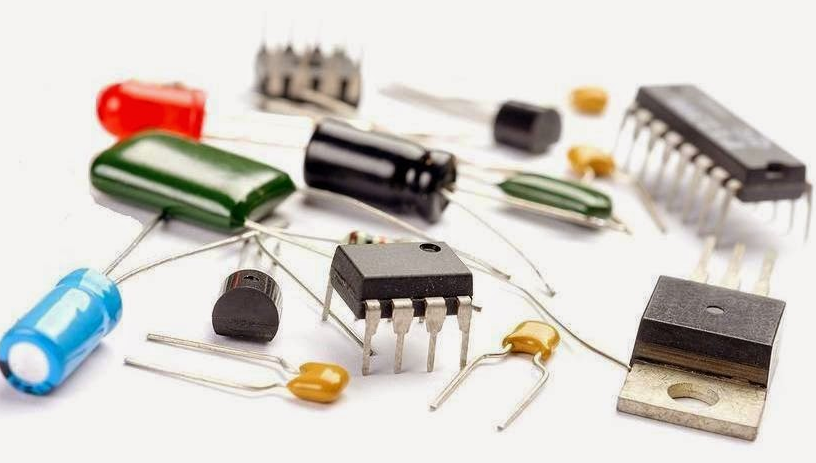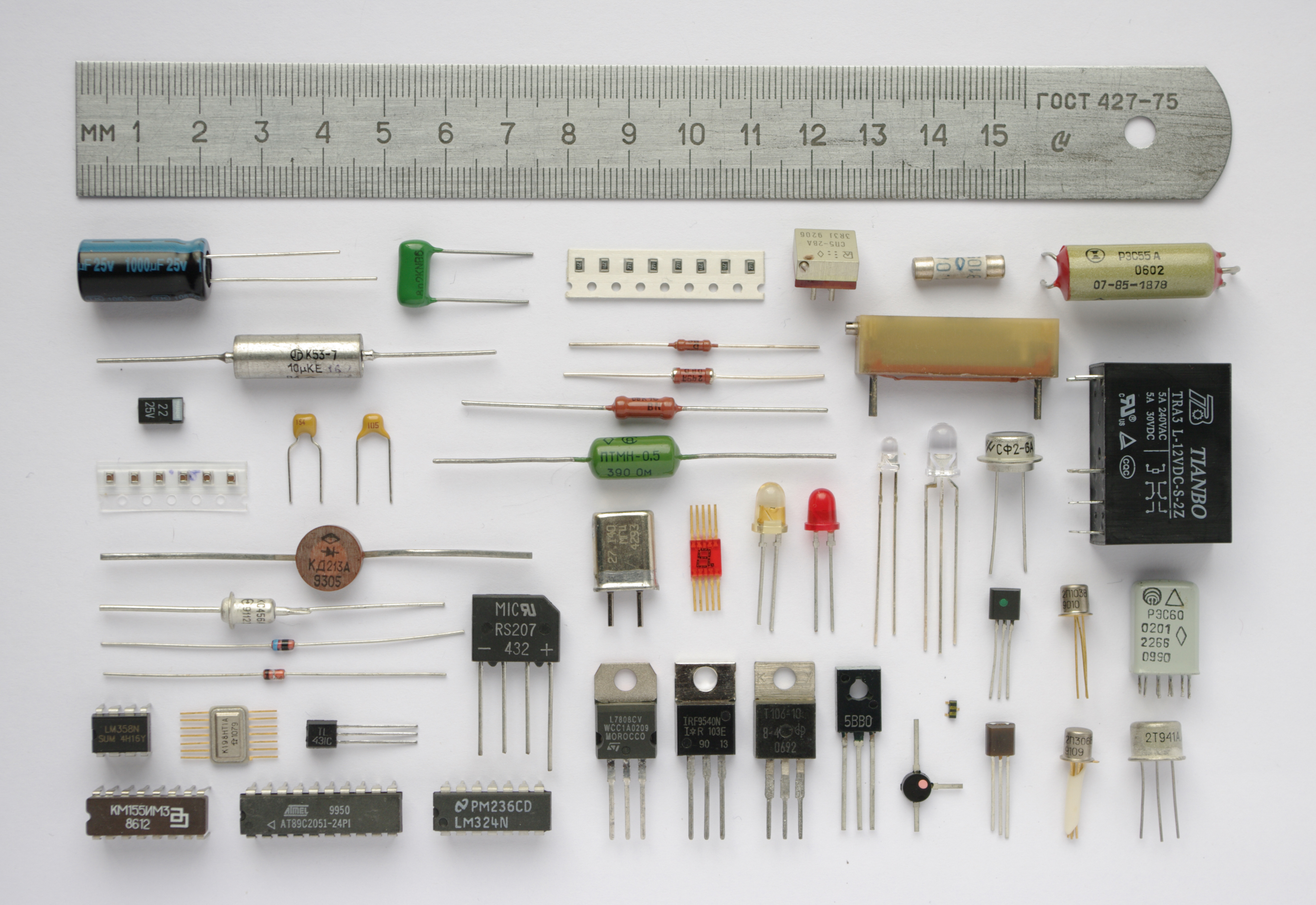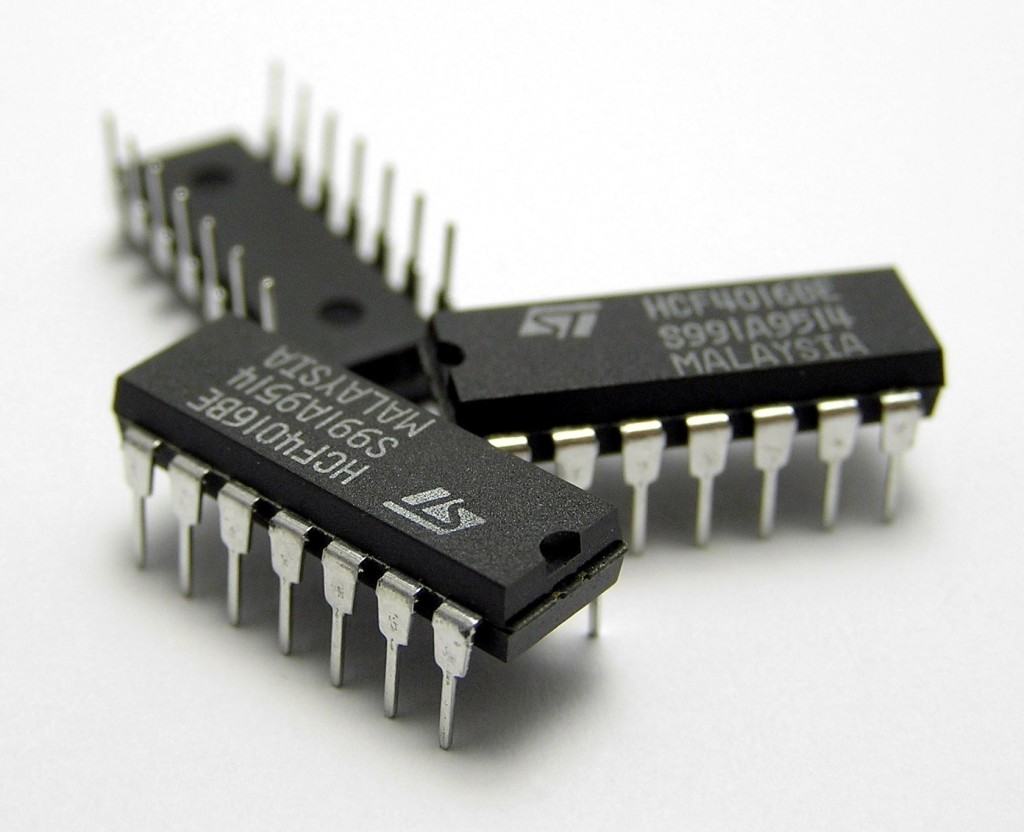Electronic component
As an electrical component is known in electrical engineering the smallest basic, considered as a unit part of an electric circuit both as a mathematical-physical phenomenon, as well as in the form of an idealized component as real ( discrete ) component or as an assembly. The electrical component as a unit may, in individual cases consist of several components, for example: Bobbins wire = core coil with the electrical property of inductance. Important electrical components are electron tube, semiconductor diodes, transistors, integrated circuits, resistor, capacitor and inductor.
Basic types of devices are symbolized in schematics through each different, standardized graphical symbols.
In common usage, especially in the industrial sector, real (discrete and integrated ) electrical components, electromechanical and mechanical components are commonly called " Electronic Components ". Thus, components and modules are classified, which are suitable for electronic devices and systems as well as industrially produced, distributed and used.
Classification
It is common to divide electrical components in different classes:
Ideal and real components
Ideal components are fictitious components with idealized properties. An interconnection of ideal electrical components is required for the calculation and simulation of real components, which are suitable for circuit simulation.
Reliable components are physical realizations of electrical components. They form a mechanical unit and can also be composed of multiple components, ie the electrical point of itself constitute a circuit ( eg integrated circuits or a spark-quenching combination ).
Passive and active components
Passive components are those that show no effect and no amplifier control function have (eg, resistors, capacitors, inductors, and memristors ).
Active Components show in some form of a reinforcing effect of the desired signal or allow a controller ( eg diodes, transistors, optocouplers, relays).
Linear and non-linear components
Linear devices satisfy the superposition principle. These components have a substantially linear relationship between certain electrical quantities ( current and voltage or the most time derivatives ) to below the specified conditions of use. When used with an AC voltage or current does this affect, for example, so that the output signal no further frequencies occur as the input signal.
Non-linear components have a desired non-linearity. For example, a rectifier diode conducts in one direction only electricity, while nearly behaves like an insulator at the opposite polarity of the applied voltage.
Discrete and integrated components
An electrical component, which consists of only a single functional unit, is referred to as discrete. In contrast, a plurality of identical or different functional units are integrated into a complex component in integrated circuits, inter alia, that together. For example, a transistor may occur both as a discrete component as well as part of an integrated circuit.
In some cases, such as sales catalogs, components are also divided by country of origin and referred to, for example, as " Japan - semiconductor" or " Far East - semiconductor".
Principles of Operation
Electrical components use electrical fields and magnetic fields as well as mechanical vibrations, movements and forces, to produce certain desired functional relationship between the electric voltage and the electric current. Many devices use up the magnetic flux current-carrying conductor, the electrical resistance, solid -state physical properties of semiconductor materials or the back and forth conversion electric current in infrared or structure-borne noise. Other electrical components are used for conversion of, or in non-electrical quantities (eg light, sound, magnetism, force, temperature ). Examples are photo diodes, light emitting diodes, sensors, relays, thermistors, strain gauges or piezo elements.
The interconnection of components and electrical lines results in an electrical circuit, circuit board or assembly. Therefore, it is often spoken of as a component smallest functional element of an electrical circuit - the inner circuit and function contained integrated circuits is not shown in detail, but can be specified only by their type designation.










